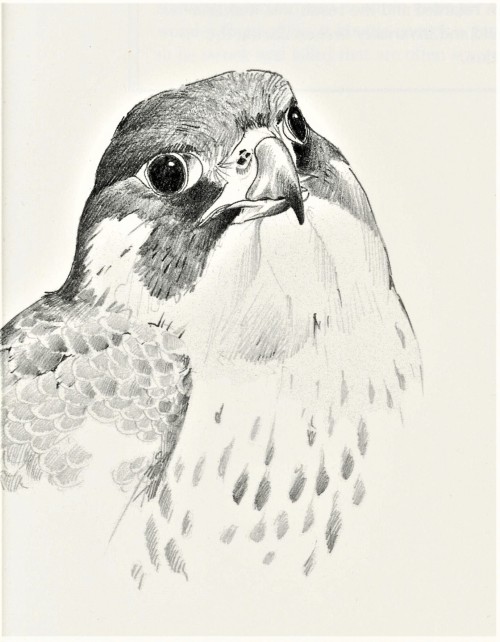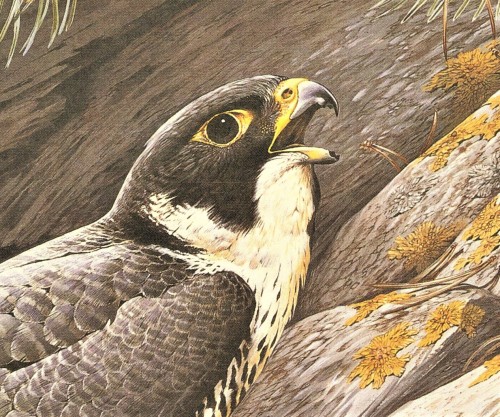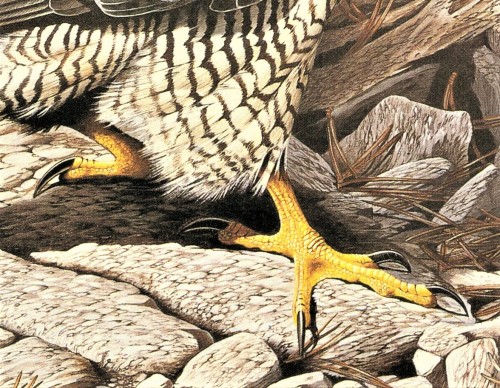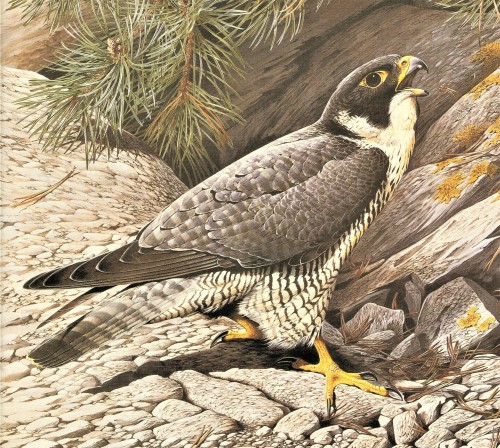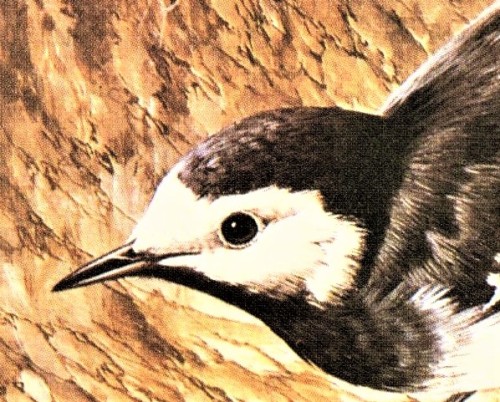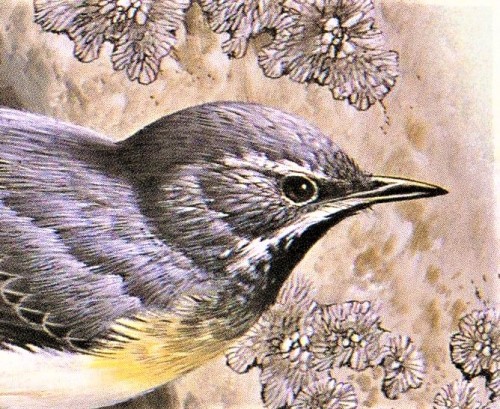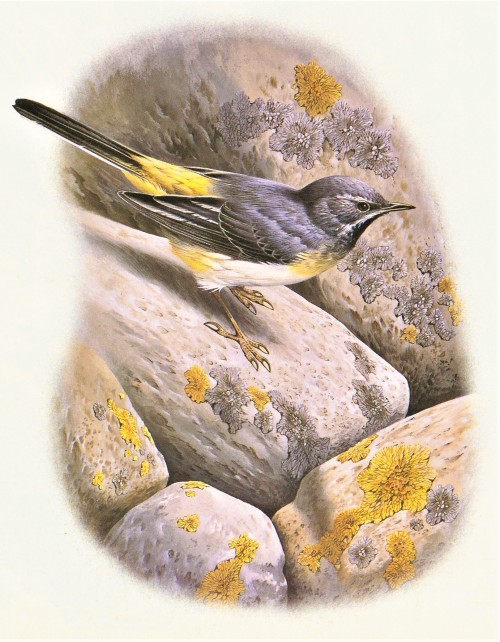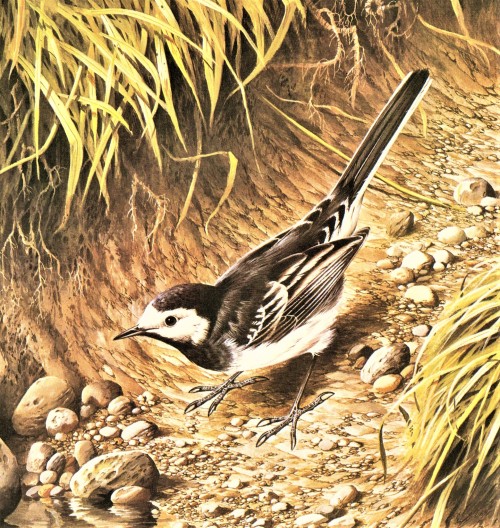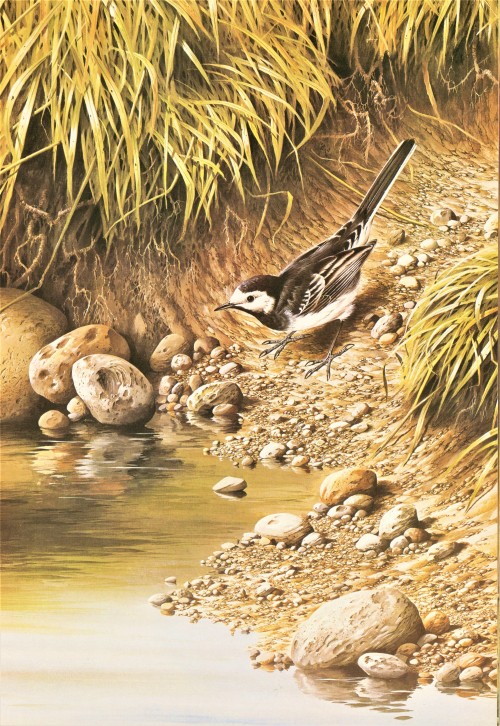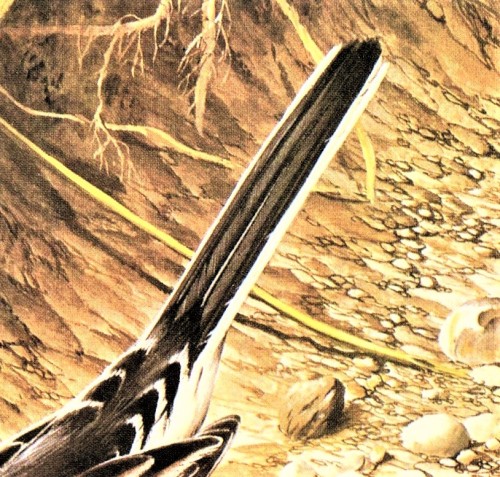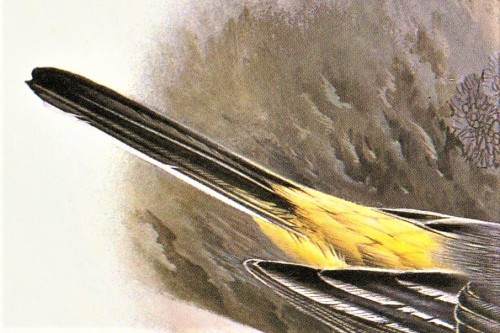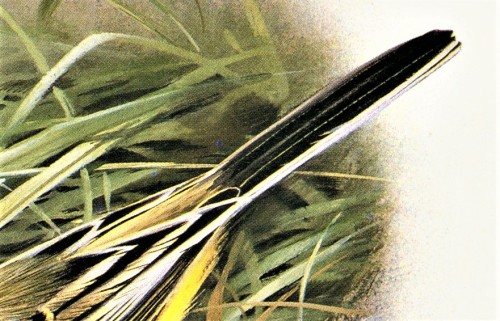#terance james bond
A Peregrine Feathursday
ThePeregrine Falcon (Falco peregrinus) has made a remarkable comeback here in Wisconsin since its precipitous decline starting in the 1950s. While they are still endangered, they are gracing our skies in slowly increasing numbers every year, and they are no longer an uncommon neighbor. In Milwaukee we have several mating pairs and our tall city structures provide excellent nesting sites, including here at UWM on top of our Engineering and Math Science Building, which has its own falconcam to observe nesting behavior, but not much is happening this season yet. The city also offers an abundance of prey, so Peregrines are quite at home here.
The drawings and the painting presented here are from our folio volume Birds, The Paintings of Terance James Bond, by British bird artist Terance James Bond, published in Cambridge, England, by the Lutterworth Press in 1988. Of his painting of the Peregrine, Bond writes:
The bird shown in my painting is an adult male … calling from what could be a potential nesting site. As can be seen, various shades of grey are the predominant colours in the picture, but I felt this worked well. The high points of the painting are, of course the bird’s head and feet. Apart from being the most important part of a Falcon’s equipment, they also lend a note of relief to the painting by being bright yellow. The branches of the Scots pine introduce an extra colour and a different element in the form of foliage and help soften what is otherwise a very strong composition.
View moreposts with paintings by Terance James Bond.
Post link
A Wagtail Feathursday
This week we highlight some Wagtailsin the genus Motacilla. The only wagtails found in North America are subspecies of the Eurasian Yellow and White Wagtails that have established a foothold in far western Alaska. Therefore we turn to the three species of wagtail most commonly found in Europe:
- White Wagtail(Motacilla alba). A black and white bird, a subspecies of which, the Pied Wagtail, most commonly found in Britain, is shown here.
- Grey Wagtail(Motacilla cinerea). A grey-headed bird with yellow rump and underparts.
- Yellow Wagtail(Motacilla flava). A bird with bright yellow underparts from chin to rear.
All of these birds have long dark tails with white outer bars. Their common name derives from their most conspicuous feature, their constantly wagging tails. Another common feature is that they all prefer habitats with running water, although the White Wagtail, especially the Pied subspecies in England, have accommodated themselves to urban environments and often can be found feeding on insects on lawns, playing fields, parking lots, and flat roofs.
Our featured wagtails come from reproductions of paintings in our folio volume Birds, The Paintings of Terance James Bond, by British bird artist Terance James Bond, published in Cambridge, England, by the Lutterworth Press in 1988.
View moreposts with paintings by Terance James Bond.
Post link


